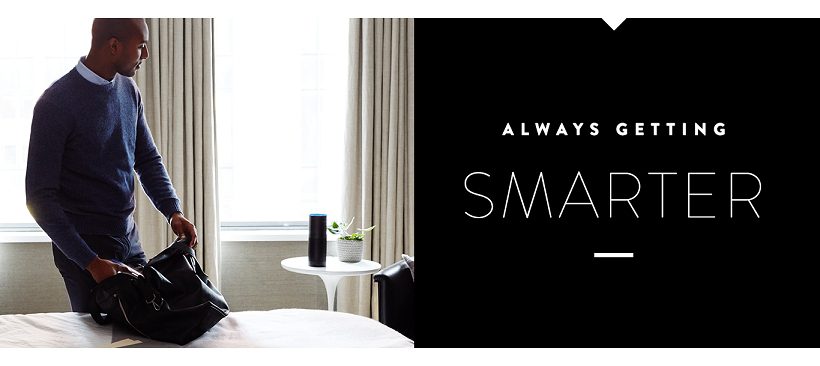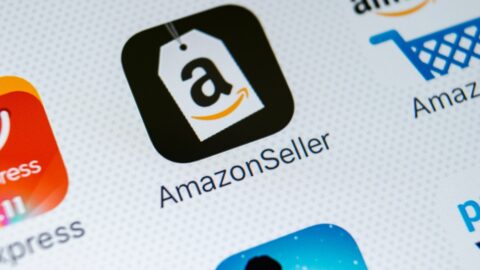 “Alexa, what’s the weather like today?”
“Alexa, what’s the weather like today?”
“Alexa, add coffee to my shopping list.”
“Alexa, play David Bowie.”
If you asked me a year ago, I would say that the mere idea of a small, voice-powered device orchestrating my day-to-day life and household would be ridiculous. When my husband initially proposed we order an Amazon Echo, the landmark product powered by the Alexa operating system, I was adamant in my response: “I’m a paper-and-pen gal, there’s no reason for it! Give me a compelling use case, and maybe I’ll buy in.”
Advertisement
After he explained that Alexa integrated with smart home technologies, and that it would ultimately help us improve energy efficiencies, I caved. We could operate lights, even our thermostat, simply by using our voice. Today, she is ever-present in our home. Beyond our Echo “hub,” we have Echo Dots scattered across different rooms, allowing us to connect with her, the mighty Alexa, anytime and anywhere.
Frankly, we’re not alone. VoiceLabs estimates that approximately 24.5 million voice-powered devices will be shipped this year, leading to a total footprint of 33 million worldwide. Amazon will undoubtedly be the power player: Consumer Intelligence Research Partners estimated that Amazon sold 5.1 million Echo devices in the U.S. as of November 2016. RBC Capital Markets, meanwhile, predicts that 60 million Alexa devices will be sold by 2020, which will ultimately bring the total install base to 128 million.
In summer 2016, Jeff Bezos named the Echo Amazon’s “fourth pillar product,” placing it alongside the marketplace, Amazon Prime and Amazon Web Services. At that time, the Echo had more than 1,000 “skills,” which are integrations with different apps. Since then, that number has swelled to about 10,000 – and brands are trying to get a piece of Alexa’s hefty user base. Consumers now can ask Alexa to order rides from Uber and Lyft, or to buy an anniversary bouquet from 1-800-FLOWERS. They can even order two pepperoni pies from Domino’s while entertaining friends on a Friday night or a Starbucks latte, just the way they like it.
New skills are being added regularly and machine learning algorithms are helping Alexa get smarter by the day. As a result, I expect that we’ll only see more consumers use and shop with her. In fact, roughly one third of Alexa users say they currently use voice to make Amazon purchases, according to Field Agent research. Top categories are music (43%), household supplies (38%), electronics (27%) and gifts (25%).
But what does this mean for retailers? Is Alexa merely another channel to connect them to consumers in a more relevant and intimate way? Or is she the latest threat crafted by Amazon in order to truly reign the world of retail?
“Alexa, Help Me Drive Sales”
As Alexa’s roster of skills expands and Amazon continues to release new complementary products, such as Echo Show and Echo Look, I can’t help but contemplate the potential implications for brands and retailers.
Echo Look, for example, allows users to take photos and videos of their outfits and get a second opinion from Style Check, which combines machine learning algorithms and advice from real-life fashion experts. Users build their own customized lookbooks and receive personal product and brand recommendations based on these submissions. But how do brands and retailers become part of this conversation? Are results based on popularity, ratings/reviews or recommendations established by Amazon itself?
Similar questions emerge when we think about the broader adoption of Alexa. Will Alexa always present the best product at the best price, or is there a more calculated play happening on the back-end? L2 Founder and Head Analyst Scott Galloway noted in a recent column that with Alexa and the rise of voice-powered shopping, brand clout will vanish. All of the weapons CPG have historically used, such as packaging, messaging, product placement and creative, will no longer lead in consumer decision-making.
“The foreshadowing of the death of brand, at the hand of voice, can be seen in search queries,” Galloway noted. “Fewer and fewer contain a brand prefix or modifier.” Through internal testing, L2 uncovered two key trends:
- To drive commerce via Alexa, Amazon is offering lower prices on many products if they’re ordered through voice.
- If a consumer asks Alexa to buy a product and doesn’t mention a specific brand, she will suggest Amazon Basics for specific product categories (like batteries) instead of more established CPG brands.
There currently are few (if any) answers to the above questions I posed. Like consumers are experimenting with Alexa and testing new skills, many brands are doing the same. They’re keeping a close eye on the ways target consumers are using Alexa, the key questions they ask and, most of all, the products they request and ultimately buy.
I could imagine that many technology vendors will be offering tips and best practices to help retailers capitalize on Alexa. During Aptos’ annual Engage user conference, the team held an in-depth workshop focused on competing against Amazon and had a presentation dedicated solely to Alexa.
I truly believe that Alexa is the voice of a new retail revolution, and I’m excited to see what new opportunities emerge for retailers over time.









